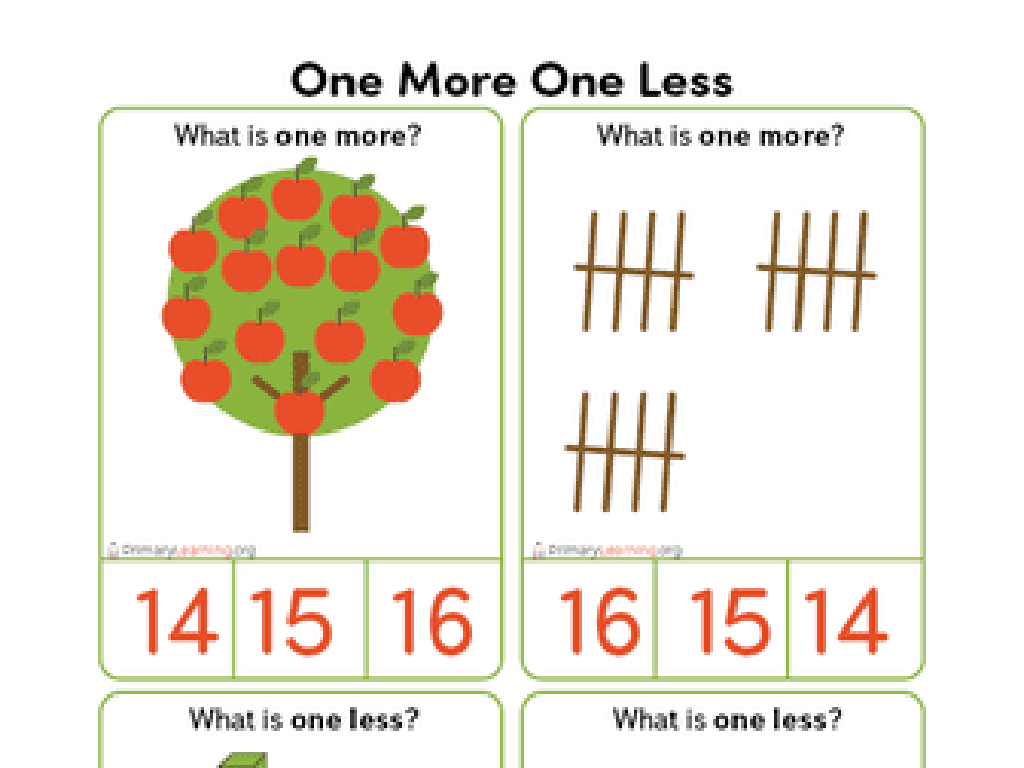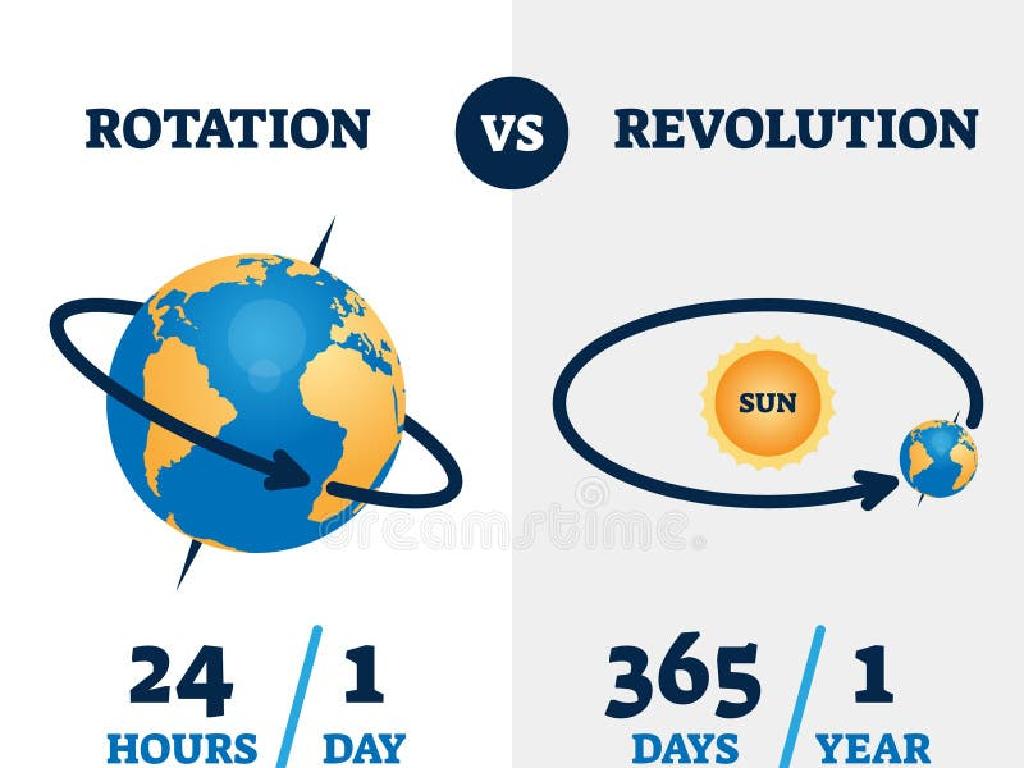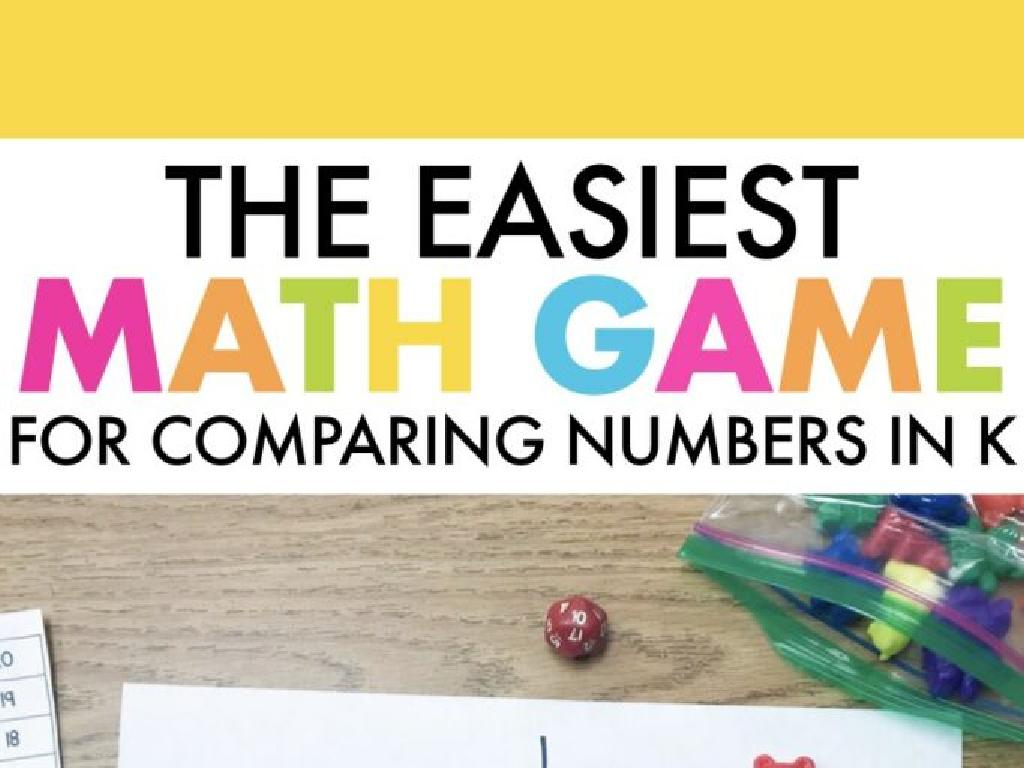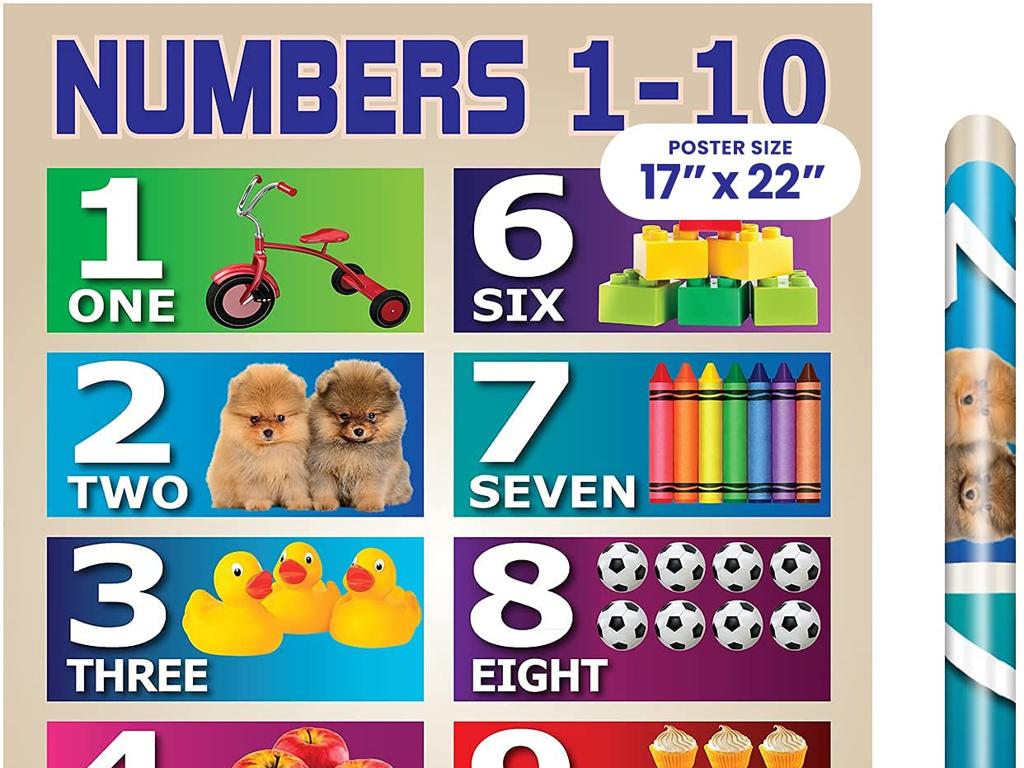Multiplication Facts For 2, 3, 4, 5, And 10: True Or False?
Subject: Math
Grade: Third grade
Topic: Multiplication Fluency Up To 10
Please LOG IN to download the presentation. Access is available to registered users only.
View More Content
Welcome to Multiplication!
– Today’s Adventure: Multiplication Facts!
– Multiplication means groups of numbers
– If you have 4 groups of 3 apples, that’s 4×3
– Practice with 2, 3, 4, 5, and 10
– We’ll multiply numbers by 2, 3, 4, 5, and 10
– True or False activity
– Decide if statements like ‘2×3=5’ are true or false
|
This slide introduces students to the concept of multiplication as grouping numbers and sets the stage for practicing multiplication facts with the numbers 2, 3, 4, 5, and 10. Emphasize that multiplication is a faster way of adding the same number multiple times. Use visual aids like counters or drawings to show groups of items being multiplied. Encourage students to think of multiplication as repeated addition to solidify their understanding. The true or false activity will help assess their grasp of the facts. For example, show them that 2×3 is the same as 2+2+2 or 3+3, and then ask if 2×3 equals 5 or 6. This interactive approach will make learning multiplication facts engaging and memorable.
Understanding Multiplication
– Multiplication is repeated addition
– It’s like adding the same number over and over!
– Example: 3 x 4 equals 4 added 3 times
– Just like 4 + 4 + 4 = 12, so does 3 x 4!
– Visualize with groups of items
– Imagine 4 apples in 3 different baskets
– Practice with real objects
– Try grouping your pencils or snacks to practice
|
This slide introduces the concept of multiplication to third graders by relating it to the more familiar operation of addition. Start by explaining that multiplication is a shortcut for adding the same number multiple times. Use the example provided to show how 3 groups of 4 is the same as adding 4 three times. To help students visualize the concept, describe how 4 apples can be grouped into 3 sets, or use any other relatable items. Encourage hands-on practice by having students group items they have, like pencils or snacks, to reinforce the concept. This activity will help solidify their understanding of multiplication as repeated addition.
Multiplication Facts for 2: Double Your Fun!
– Multiplying by 2 equals doubling
– If you have 1 cookie and get 1 more, now you have 2 cookies!
– Example: 2 x 5 is 2 groups of 5
– Like having 2 baskets with 5 apples each, how many apples do you have?
– Practice with examples together
– We’ll solve problems like 2 x 3 and 2 x 6 on the board
|
This slide introduces the concept of multiplication by 2 as a form of doubling. Start by explaining that multiplying by 2 means you have two of something. Use relatable examples like cookies or apples to illustrate this point. Show them that 2 x 5 is simply having two groups of five items. Engage the class by practicing multiplication problems on the board, asking students to participate in solving them. Encourage them to think of multiplication by 2 as adding the same number twice, which can be a more intuitive way to understand the concept for third graders.
Multiplication Facts for 3
– Multiplying by 3: one more group than doubling
– Example: 3 x 4 means 3 groups of 4
– If you double 4 (2 x 4), then add one more group of 4, you get 3 x 4
– Let’s practice multiplication by 3 together
– We’ll solve multiplication problems as a class
– True or False: 3 x 4 is the same as 2 x 4 + 4
– Think about what doubling a number means and then adding one more group
|
This slide introduces the concept of multiplying by 3 as an extension of doubling a number and then adding one more group. Start by explaining that multiplying by 3 is like having three of something. Use visual aids like counters or drawings to show 3 groups of 4 items. Engage the class in a group activity where they can practice multiplying different numbers by 3. For the true or false question, guide them to understand that 3 x 4 is indeed 12, which is the same as 8 (2 x 4) plus 4 more. This exercise will help reinforce their understanding of multiplication as repeated addition and build their fluency with the multiplication facts for 3.
Multiplication Facts for 4
– Multiplying by 4 creates four groups
– Example: 4 x 2 is like 4 groups of 2
– Think of having 4 baskets with 2 apples each
– Practice with fun examples together
– Use items like toys or crayons to make groups of 4
– Understand patterns when multiplying by 4
– Notice how each time we are adding 4 more
|
This slide is aimed at helping third graders understand the concept of multiplication by 4 through visualization and examples. Start by explaining that multiplying by 4 is like having four groups of something. Use the example of 4 x 2 to show them it’s like having 4 baskets with 2 apples each, which equals 8 apples. Encourage the students to practice with tangible items like toys or crayons to create groups of 4 and count them. Highlight the pattern that emerges when we multiply different numbers by 4, and how it’s always adding 4 more to the previous result. This will help them see the consistency in multiplication and aid in developing fluency.
Multiplication Magic with the Number 5
– Multiplying by 5 has a cool pattern
– Count by 5s to see the pattern emerge
– Example: 5 x 3 is like 5 groups of 3
– 5, 10, 15 – like adding 3 five times!
– Each time, just add 5 more to the last result
– 5, 10, 15, 20 – notice the last digits: 0, 5, 0, 5
– Let’s find the pattern with 5’s multiples!
– Practice with different numbers to see it!
|
This slide introduces students to the pattern found when multiplying by 5. Emphasize that multiplying by 5 is like adding the same number five times. Show them that the products of 5 end in either 0 or 5, which is a helpful pattern to remember. Use examples on the board to demonstrate this pattern and encourage students to practice with different numbers to become familiar with it. This will help them to quickly and accurately multiply by 5, enhancing their multiplication fluency.
Multiplication Facts for 10
– Multiplying by 10 adds a zero
– Example: 10 x 2 is like 10 groups of 2
– Think of it as 2, 2, 2, and so on, 10 times!
– Explore the power of 10 in multiplication
– Understanding 10 as a base makes math easier
– Practice with different numbers
– Try 10 x 3, 10 x 4, and so on to see the pattern
|
This slide introduces the concept of multiplying by 10. Emphasize to students that when we multiply any number by 10, we essentially add a zero to that number. Use visual aids like grouping objects in sets of 10 to illustrate this point. Provide examples such as 10 x 2 to show how it’s just 2 added together 10 times. Encourage students to explore this concept by multiplying different numbers by 10 and observing the pattern that emerges. In the next class, have students practice this concept with various numbers to reinforce their understanding and build their multiplication fluency.
True or False: Multiplication Fact Check!
– Is 4 x 5 the same as 5 x 4? True
– Commutative property: 4 groups of 5 is equal to 5 groups of 4.
– Does 3 x 3 only mean 3 groups of 3? False
– Can 10 x 6 be solved by adding a zero to 6? True
– Multiplying by 10 tip: Just add a zero to the other number!
|
This slide is designed to test students’ understanding of multiplication facts and properties. The first point reinforces the commutative property of multiplication, which states that numbers can be multiplied in any order and the result will be the same. The second point is a trick question aimed at challenging the students’ understanding that multiplication is not limited to just ‘groups of’ but also repeated addition. The third point is a quick tip for multiplying any number by 10. During the presentation, encourage students to explain why each statement is true or false and provide examples. This will help solidify their understanding of multiplication concepts.
Class Activity: Multiplication Bingo
– Play Bingo with multiplication facts
– Each correct answer brings you closer
– Get ready for fun and learning
– Who will get Bingo first?
|
This interactive class activity is designed to reinforce the students’ understanding of multiplication facts for 2, 3, 4, 5, and 10. Prepare Bingo cards with products of multiplication facts up to 10. Call out multiplication problems, and students will mark the answers if they appear on their cards. The first student to get five correct answers in a row horizontally, vertically, or diagonally wins and shouts ‘Bingo!’. This game encourages quick recall of multiplication facts and provides a fun way to assess students’ fluency. Possible variations of the game can include: 1) Reverse Bingo, where the last to get Bingo wins, to ensure all students stay engaged; 2) Group Bingo, where students work in small teams; 3) Mixed-operation Bingo, including division facts for added challenge.






